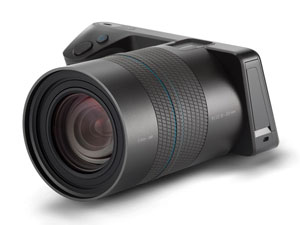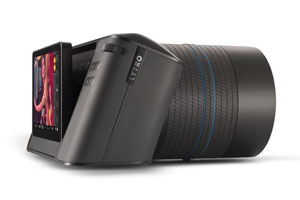This is Lytro 2.0, it has little in common with the first squarish light field camera introduced two years ago: here’s a well kept, totally unexpected camera development secret just unveiled, the high-end Illum light fielder with a large 1-inch sensor, an 8x zoom with 30-250mm reach and constant F2 aperture. It’s the “shoot now, focus later” motto redefined. As its predecessor, the Illum captures information about the angle from which light has arrived, allowing it to calculate images with different perspective and focus. Lytro calls the images “living pictures,” which are presented in a proprietary interactive format.

Its desktop processing software works with traditional products like Adobe’s Photoshop and Lightroom. Photographers can use the camera’s software to refocus pictures after the fact, generate 3-D images, adjust the depth of field and create tilt shifts. It will be available in July for $1,499. Current Lytro owners can get $200 off the purchase price and early orders receive other goodies.
Here’s how such a three-dimensional “living” image looks like, made by very rich collected information about the world:
Says Lytro about the Illum’s “40 megaray customized sensor:
Lytro’s patented microlens array technology unlocks the ability to capture the color, intensity and direction of the light rays flowing into the camera. This allows you to create imagery on a truly experiential canvas. By capturing and harnessing the power of light field, photographers can portray not just a cross-section of reality, but an authentic, interactive window into their world.

Lytro promises “precise photographic control with an exceptionally light and agile design.” For more information on this rather revolutionary camera, take yourself some time and study the Illum’s dedicated site.
And read The Verge‘s in-depth hands-on backgrounder! Clearly a camera made not by a camera company for a new class of photography. Maybe an a bit wider lens width wouldn’t have hurt and the camera’s rather on the bulky side, but certainly looking forward to this Illum (which in Latin means “today”).
Others doubt the concept. Engadget:
A classic Canon camera lens that has a zoom range of 70-200mm has about 22 pieces of glass. The Illum lens, on the other hand, has a zoom range of 30-250 mm with a very wide F2 aperture across it — and only has 13 pieces of glass. That same Canon lens would likely weigh around eight pounds. The entire weight of the Illum? About a pound and a half.
Does lighter and less complex mean worse? This Illum certainly doesn’t compare to established photographic tools as we know them… might well be a game changer. Just imagine how version 3.0 will look like.


